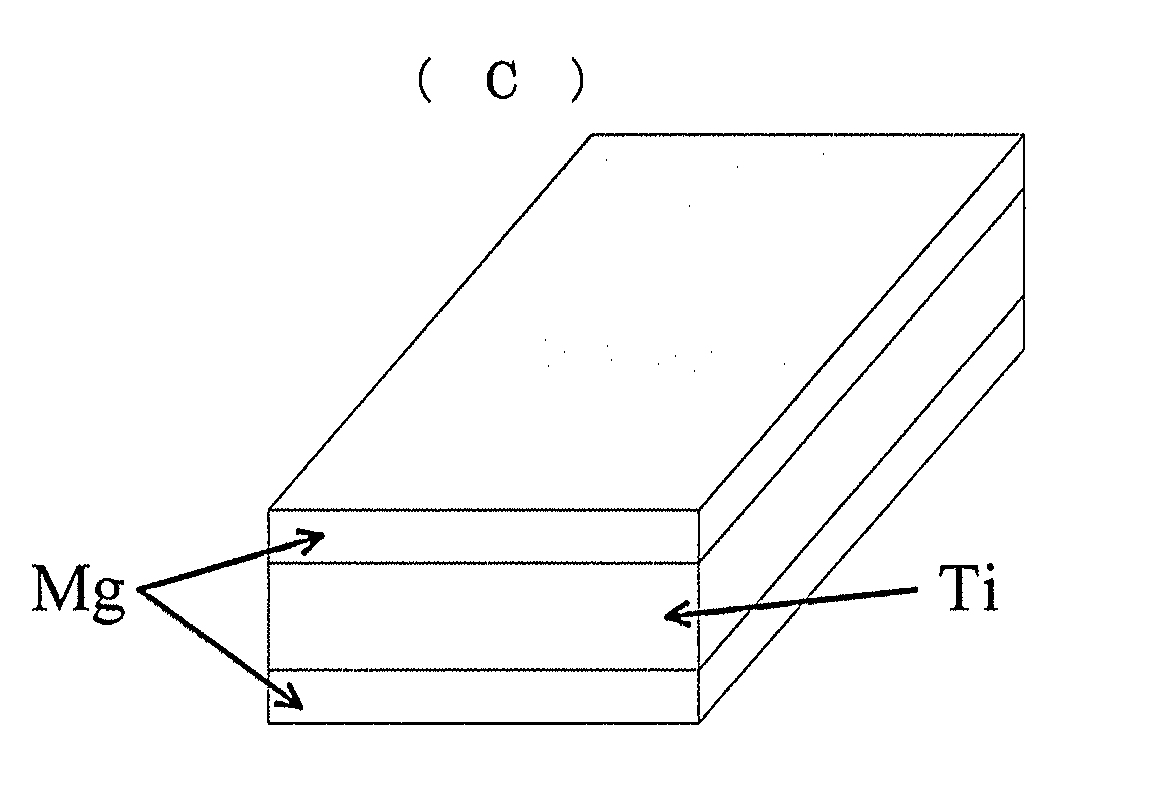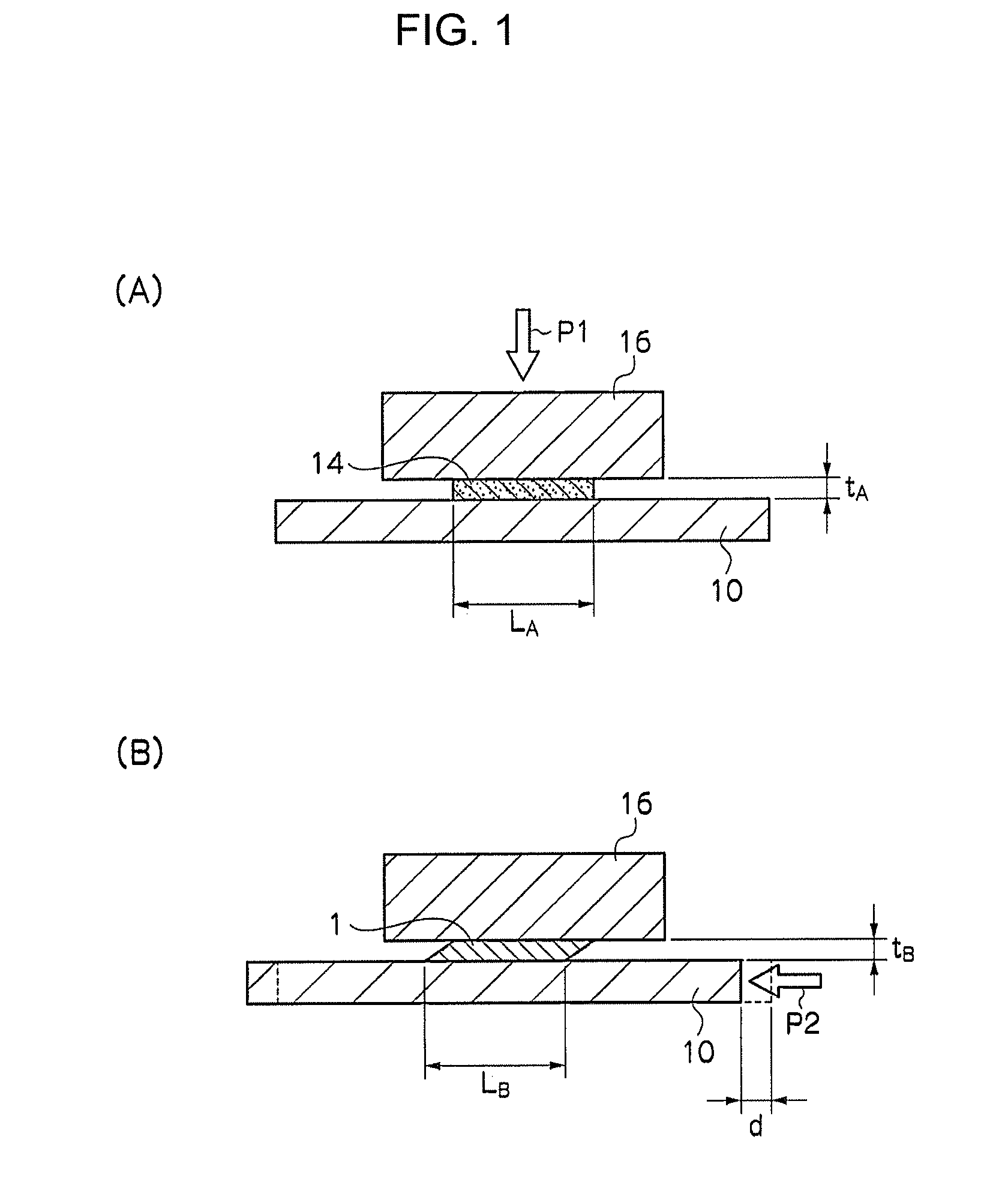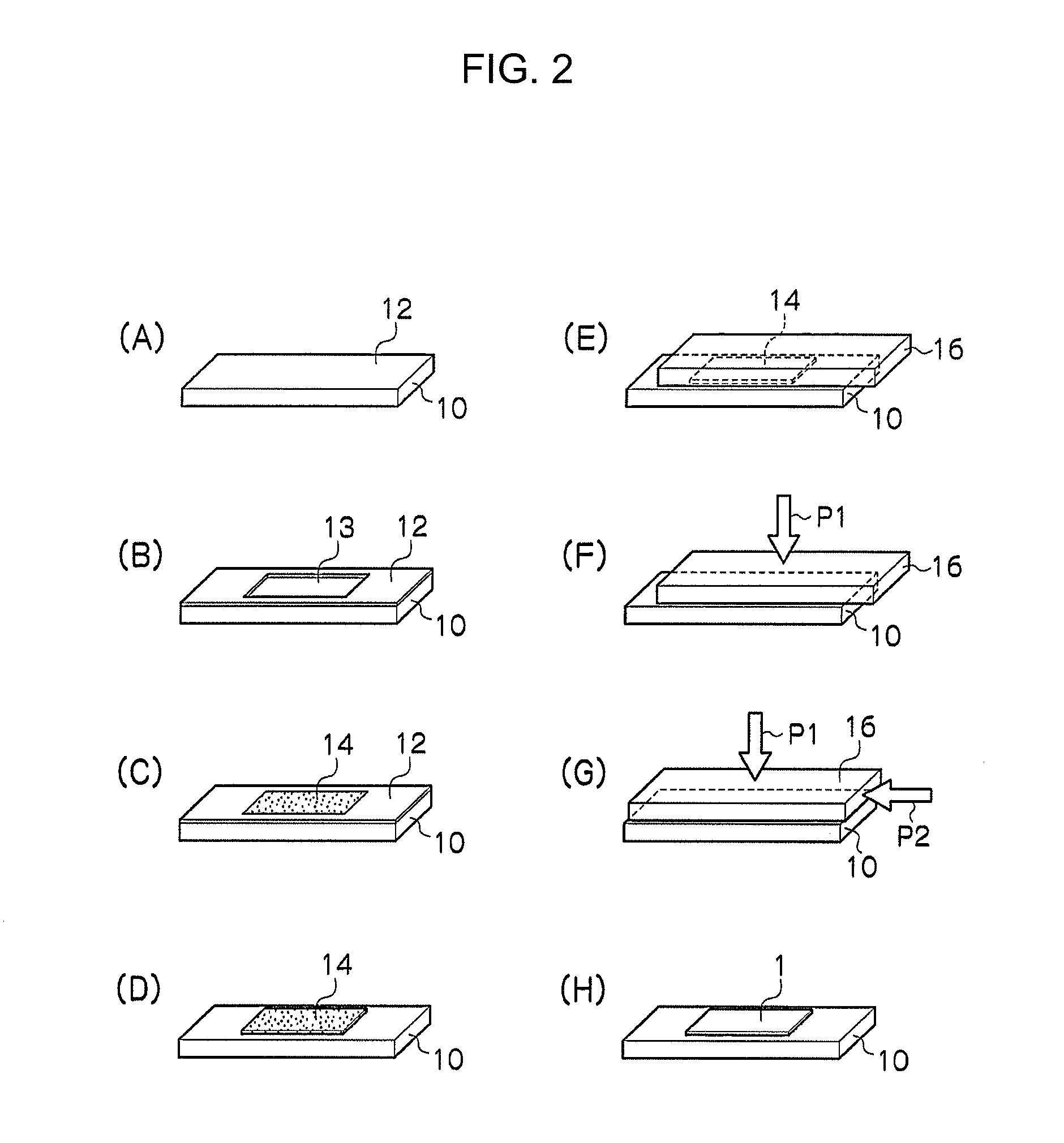Compressed fiber structural material and method for producing the same
- Summary
- Abstract
- Description
- Claims
- Application Information
AI Technical Summary
Benefits of technology
Problems solved by technology
Method used
Image
Examples
examples
[0096]The present invention will now be specifically described by various experiments below.
[Production of Compressed Fiber Structure Material]
[0097]Fibrous titanium (available from Nikko Techno) having an average diameter of approximately 20 μm and made of pure titanium having a purity of 99.52% (Class I) was used as biocompatible fiber 14. The titanium fiber was produced by a coil material cutting method in which a titanium thin plate having a thickness of 20 μm was wound in a coil form and an end face thereof was cut so as to obtain the titanium fiber. This biocompatible fiber 14 was molded in cold pressing / shearing device 20 illustrated in FIG. 3 so as to obtain compressed fiber structural material 1.
[0098]In particular, first, on top of fixed plate 10 illustrated in FIG. 2(A), penetrated mold 12 provided with penetration hole 13 having the dimensions of 15 mm (height)×40 mm×10 mm, was installed (see FIG. 2(B)) and biocompatible fiber 14 was filled in such penetrated mold 12 (se...
PUM
| Property | Measurement | Unit |
|---|---|---|
| Length | aaaaa | aaaaa |
| Mass | aaaaa | aaaaa |
| Density | aaaaa | aaaaa |
Abstract
Description
Claims
Application Information
 Login to View More
Login to View More - R&D
- Intellectual Property
- Life Sciences
- Materials
- Tech Scout
- Unparalleled Data Quality
- Higher Quality Content
- 60% Fewer Hallucinations
Browse by: Latest US Patents, China's latest patents, Technical Efficacy Thesaurus, Application Domain, Technology Topic, Popular Technical Reports.
© 2025 PatSnap. All rights reserved.Legal|Privacy policy|Modern Slavery Act Transparency Statement|Sitemap|About US| Contact US: help@patsnap.com



